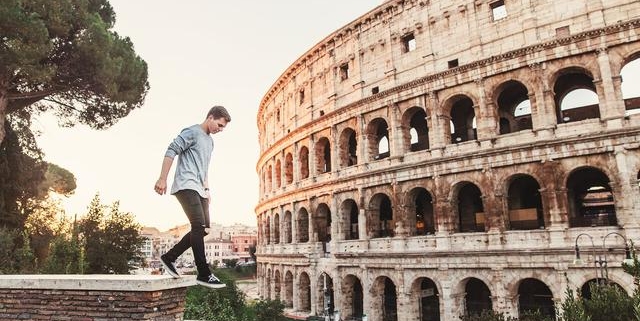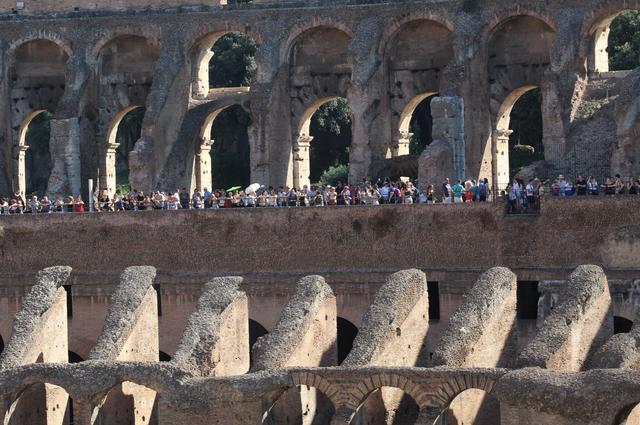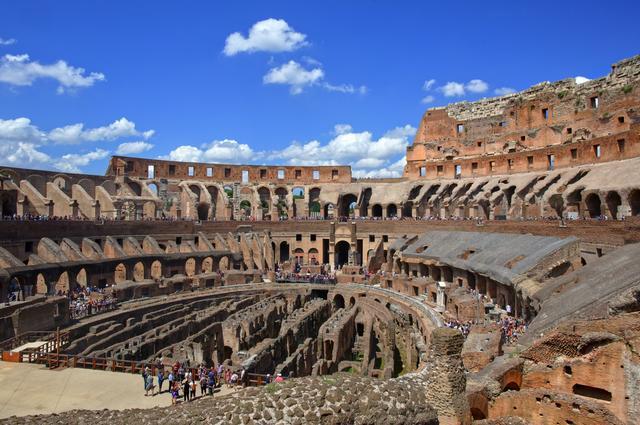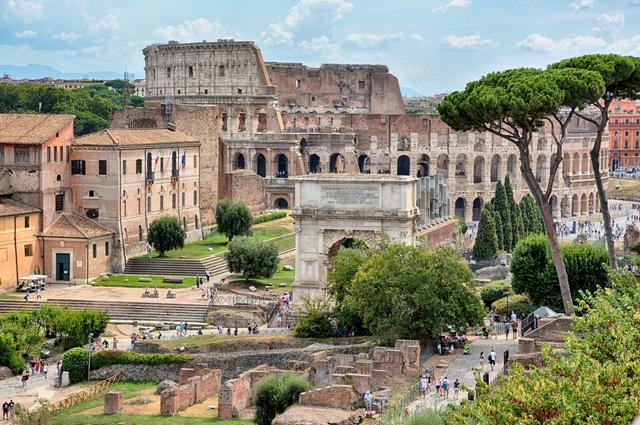Everything tourists need to know about the Colosseum
If you’re planning on going to Rome, you probably want to visit the Colosseum. If you want to get in without waiting in huge lines and want to fully appreciate your visit without any unfortunate surprises, you’ve found the right article.
The massive amphitheater outside the Roman forum in the center of the city is considered one of the most popular and famous tourist sites in the world. The Colosseum is a symbol of Rome for many people and millions of tourists come see it every year.
How can I buy Colosseum tickets
When planning your Colosseum visit, remember that it’s one of the main tourist sites in Rome, so there are frequently huge lines and if you come in the busy tourist season from May to September you might have to stand for hours. And it’s no joke in the heat! If you’re hoping to buy an entrance ticket at the Colosseum you’re risking a lot of time and energy.
There are three ways to buy a Colosseum ticket in advance without having to stand in line:
- Buy tickets online. You’ll have to pay 2 additional Euros on the 16 Euro ticket price for using the online-reservation service, but let’s not pinch pennies. You’ll be happy to have spent the extra money to avoid standing in line for hours.
- Buy the Roma Pass tourist card, which gives you priority access into the Colosseum and the majority of other tourist attractions in Rome as well. Moreover, Roma Pass lets you visit several museums and tourist sites for free or at a discount and also includes free rides on public transport while the card is active. There are two types of tourist cards: 48 hours (32 Euros) or 72 hours (52 Euros). You can get a Roma Pass here.
-
If you don’t want to pay extra for online reservations, there is another option that will still help you avoid the long ticket lines. There’s a certain ticket that lets you visit three Roman tourist sites: the Colosseum, the Roman forum and Palatine Hill. This means you can buy the 12 Euro ticket at one of these spots, and can then use the ticket to visit the other two places on this list. You can get the ticket at the Roman forum or Palatine Hill, whose ticket counters have much smaller lines, and then use it to visit the Colosseum. You can also buy a package ticket with a guide.
Remember, the single ticket for the Colosseum, Roman forum and Palatine hill works for two days, but you can only visit each place one time. Entrance to the Colosseum for children under 18 years old is free.
You can get into the Colosseum for free on the first Sunday of the month, so you can’t reserve tickets for these dates.
Keep in mind that the standard 12 Euro ticket only lets you visit part of the Colosseum, namely the first and second rings. Getting into the arena, the third ring and the underground part is only possible in a group tour, for which you’ll need a separate 9 Euro ticket both for adults and children.
The Colosseum’s address and operating hours
The address is Piazza del Colosseo.
You can get there from the Colosseo metro station.
The Colosseum opens everyday at 8:30.
The Colosseum closes one hour before sunset, so the closing hours change with the seasons, from 4:30 in the winter to 7:15 from April to August. The last group is let in an hour before closing.
Since April 2016, the safety measures in the Colosseum have been increased. All visitors need to pass inspection, which adds additional lines. So when you’re planning your visit to the Colosseum, make sure to include about an hour for inspection.
If you have baggage with you, we recommend leaving it in your hotel or a storage area since you can’t bring large backpacks, purses or suitcases into the Colosseum.
Rome City Centre: book hotel in
Helpful advice from tourists on the Colosseum
-
Remember that the Colosseum, like other popular tourist places, can attract thieves, so stay vigilant, watch your purses and wallets, don’t carry a lot of cash with you, and don’t leave your valuables unattended.
-
Keep your distance from street sellers that are near the Colosseum and don’t ever buy anything from them. Their goods’ quality is sub-par and the prices are very high.
-
Wear comfortable shoes so you can walk easily on the uneven paths and steep steps in the Colosseum.
-
Bring a bottle of water, especially if you want to stay in the Colosseum for awhile. Rome can be hot even in the spring or fall. It doesn’t hurt to have a snack before your visit or bring a light meal with you, since your Colosseum visit could take several hours!
-
There are fewer tourists and shorter lines for the Colosseum from November to February.
Some interesting tidbits about the Colosseum
The Colosseum was built in 70-72 BC by order of Emperor Vespasian from the Flavian dynasty as a gift to Rome. Alas, he wasn’t able to see the Colosseum finished because he died before it was completed. The celebration in honor of the Flavian Amphitheater’s opening (that’s what the Colosseum was originally called) was organized by Vespasian’s son, Emperor Titus, who set up a 100-day celebratory marathon made up of games, gladiator fights and battles between man and beast. All of Rome went to see the Colosseum’s opening ceremony. The amphitheater could seat 50,000 people and every seat was free, but they were still dolled out according to class.
The Flavian Amphitheater became the Romans’ favorite entertainment area and they found a special pleasure in watching rough fights. Some liked watching the fights between animals, others liked fights between animals and people, but the most popular shows were the gladiator fights.
As a fighting arena, the Colosseum operated for 450 years, but gradually the gladiator fights and animal fights dwindled down, to some degree thanks to the spread of Christianity. Since then, the amphitheater has been used for various purposes, acting as a church, a cemetery, a fortress and even a warehouse. The southern part of the Colosseum was completely destroyed by a strong earthquake in the mid 14th century and the stones and pieces of marble that made it up were taken to build other buildings.
As we mentioned, the Colosseum was originally known as the Flavian Amphitheater. So where did the new name come from? There’s an interesting legend on this topic. In the 1st century, Emperor Nero ordered a huge statue of himself for the imperial residence that was called the Colossus of Nero. The statue’s fate was extremely unusual. After Nero’s death, every new emperor thought it was his duty to alter it, either changing the head or the name or something else. Emperor Hadrian decided not to change the statue itself, but changed its location, moving it from the imperial residence to a spot outside the Flavian Amphitheater. Many historians say that the Colossus statue is connected to the name Colosseum.
Have a great trip to Rome!







Leave a Reply
Want to join the discussion?Feel free to contribute!